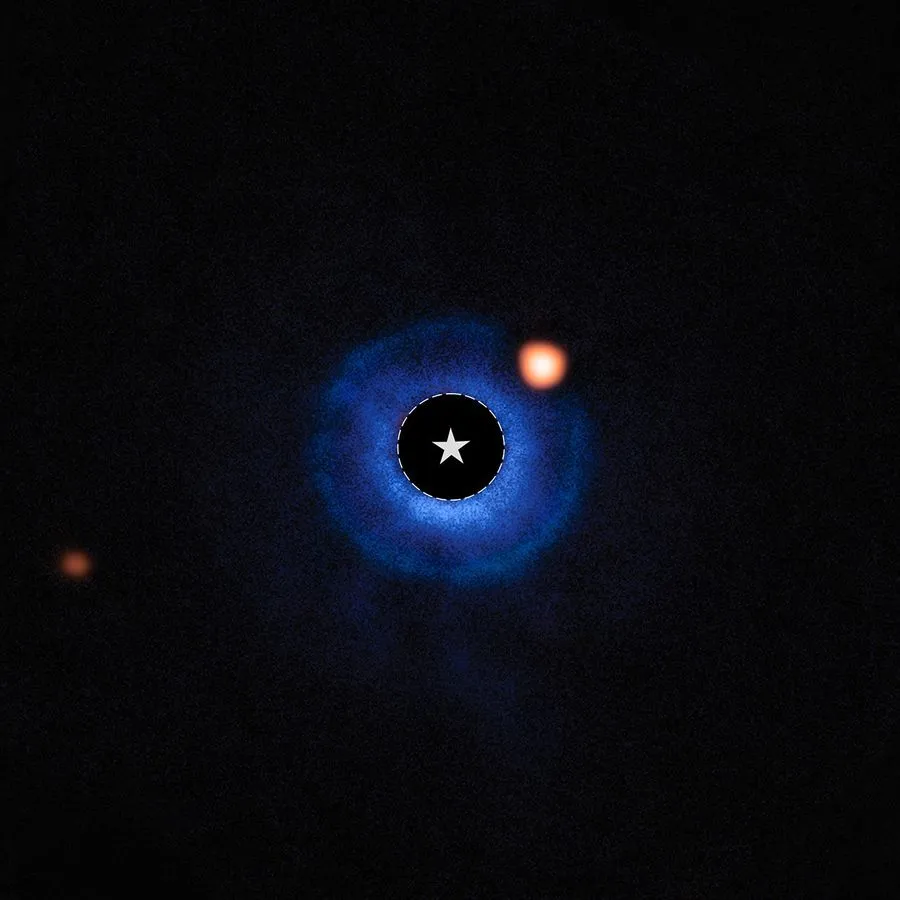An international team of astronomers has captured the first-ever direct image of an exoplanet with a mass similar to Saturn, using NASA’s James Webb Space Telescope. The newly discovered planet, designated TWA 7 b, is orbiting a young red dwarf star called TWA 7, located about 34 light-years away in the TW Hydrae association.
The team spotted a faint heat source inside the dusty disk that surrounds TWA 7. They used Webb’s Mid-Infrared Instrument (MIRI) data to block the star’s bright light and reveal hidden objects nearby. The source lies about 50 times farther from its star than Earth is from the Sun.

TWA 7 b fits theoretical models for a young, cool planet with a mass similar to Saturn and a temperature around 47 degrees Celsius. Its position lines up with a gap in one of the three rings within the surrounding disk, suggesting it may be shaping the disk’s structure through gravitational influence.
“Our observations reveal a strong candidate for a planet shaping the structure of the TWA 7 debris disk, and its position is exactly where we expected to find a planet of this mass,” lead author Anne-Marie Lagrange from CNRS and Université Grenoble Alpes in France told NASA.
Astronomers have long been studying such rings and gaps in dusty disks as signs of hidden planets, but they have never imaged such a planet directly.
These observations were part of JWST’s program 3662, which focuses on early-stage planetary systems. Using a coronagraph on JWST’s MIRI instrument, the team blocked the glare from the star, removed leftover starlight through image processing, and revealed a small heat source near the inner part of the disk.
While there is a small chance the source is a distant galaxy, the object’s size and distance from its star match what scientists expect from a young Saturn-mass planet. Its place in the disk also raises the chance it may hold a “trojan disk” (a rare dust structure in the same orbit as the planet).
Follow-up work will now focus on confirming that the object is a planet and studying its air and motion to better understand how planets grow in young star systems.
The research was published on June 25 in the journal Nature.

